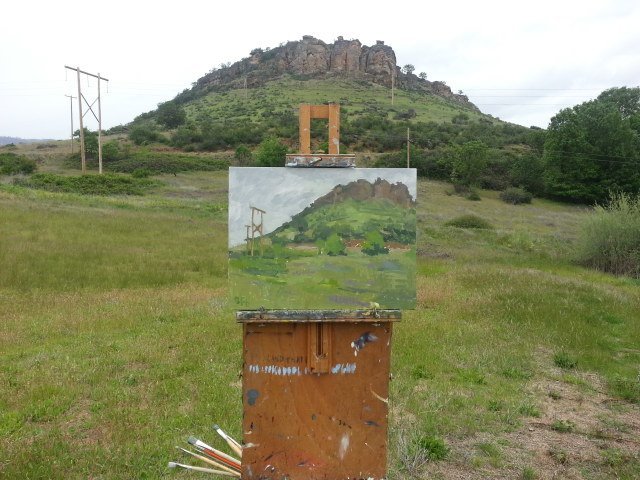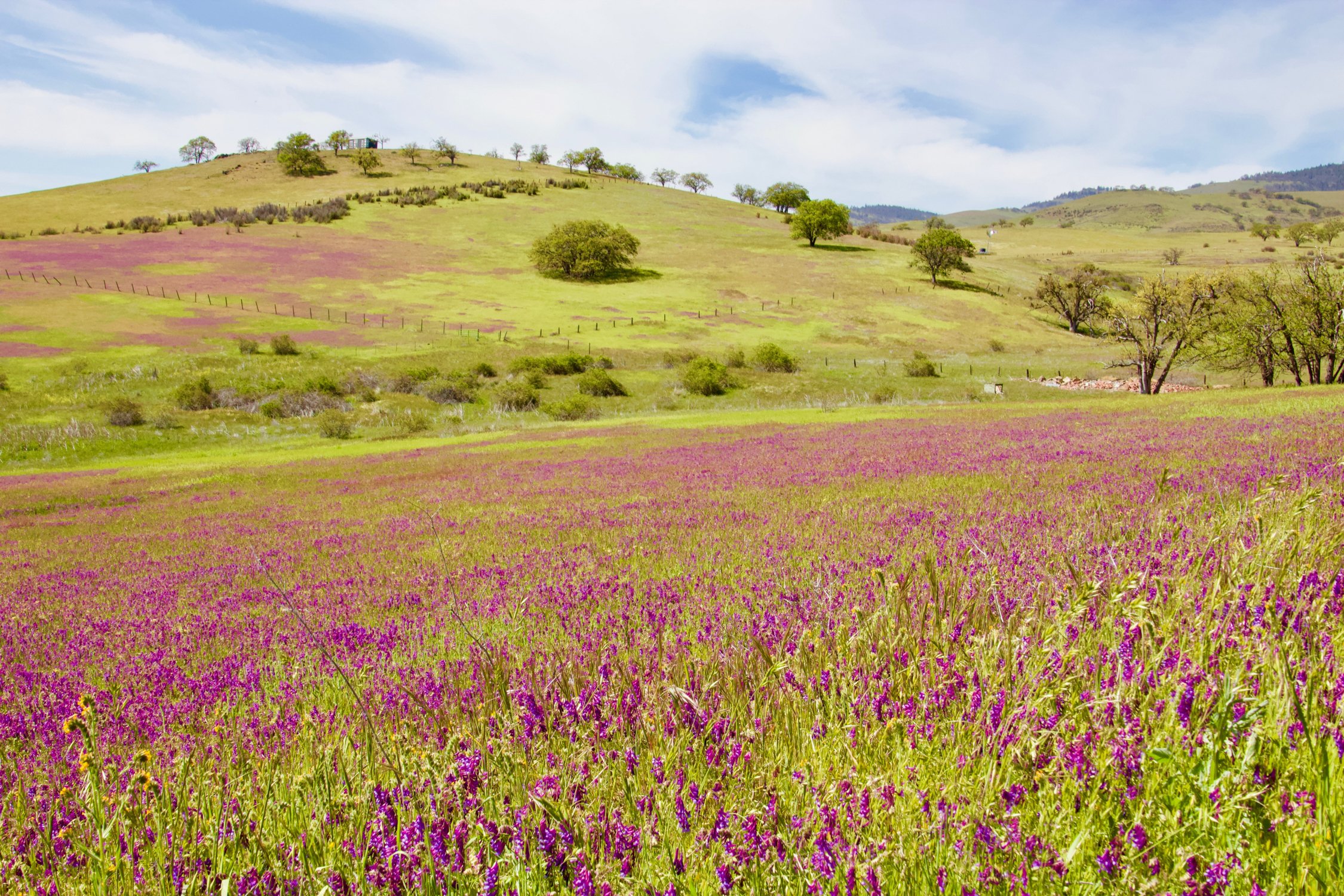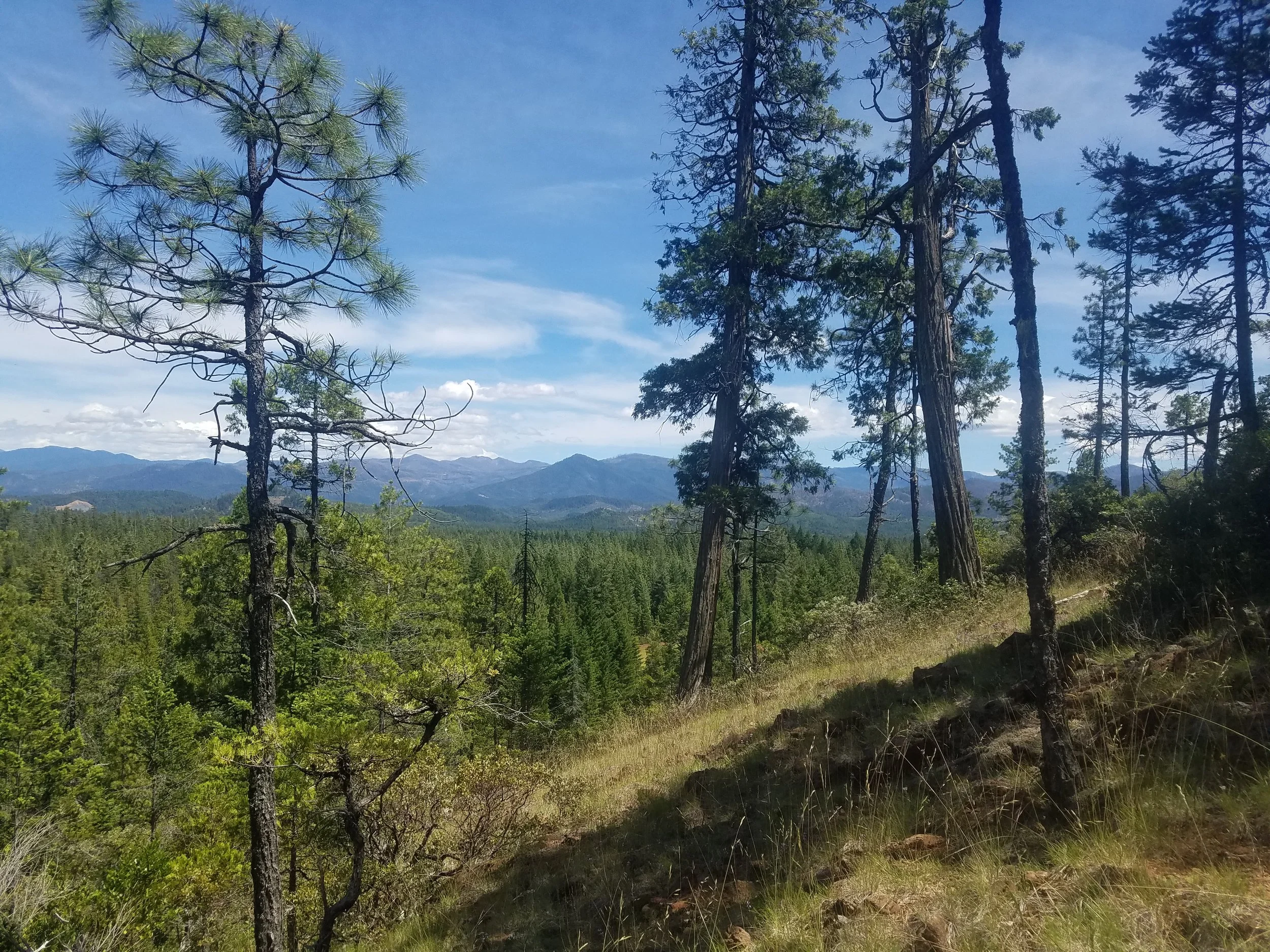Bear Gulch Preserve Extends Conserved Connectivity Corridor
On a blue-skied autumn day, Southern Oregon Land Conservancy (SOLC) staff visited a special landscape, an undeveloped 142-acre private parcel tucked away within the southwest corner of the Cascade-Siskiyou National Monument just north of the California border. We learned from a partner that this living ecological gem was on the market, and quickly realized that its conservation would secure a valuable piece of wildlife connectivity. We were also struck by its varied habitats, flowing streams, and plant diversity. Once we learned that the landowners support conservation and were willing to work with us on an acquisition, we moved to purchase the land to permanently secure its many conservation values.
Visiting what we now call Bear Gulch Preserve, one can almost feel the connectivity. From a prime vantage point on the land once slated for residential development, the view to the west looks directly at cliffs and oak woodlands already conserved under an SOLC conservation easement, one of 11 that we steward in a priority focus area. Further westward, U.S. Forest Service lands and vast wilderness areas link together a world renowned wildlife migration area known as the Cascade-Siskiyou land bridge. Along the opposite edge of the preserve, Monument lands managed by the Bureau of Land Management (BLM) connect eastward to the Mariposa Lily Botanical Area and to the site of the planned wildlife overpass over Interstate 5.
Bear Gulch Preserve lies within one of Oregon's most significant ecological corridors, a crossroads between three mountain ranges: the Cascade, Siskiyou, and Klamath Mountains. It stretches through our Colestin-Siskiyou Summit Focus Area, one of several key zones whose distinctive diversity prioritizes their conservation. The Oregon Department of Fish and Wildlife (ODFW) mapped statewide connectivity zones, the network of land and waterways that deliver the highest value for migrating wildlife. This newly protected area comes up as high priority for a variety of priority species. Conservation in connectivity zones allows seasonal movement needs of animals for foraging and dispersal as well as maintaining genetic diversity over long time periods.
On our first visit, we were thrilled to see native bunchgrass covering most of the land's open slopes, along with pine-oak woodlands, with undisturbed stands of Oregon white oak and California black oak trees. Oak woodlands are a priority habitat type because they support a diverse array of wildlife. The Preserve also contains patches of conifer forests, along with Basin and Range species such as western juniper, rabbitbrush, and buckwheat plants, alongside fritillary and likely rare lilies. This area is near the edge of the western range for some of the species, an important indicator of species range diversity and another measure of how conserving this area is important for biodiversity.
Wyatt standing at the base of a very tall and majestic Ponderosa Pine
The Preserve drains into the Cottonwood Creek subwatershed of the greater Klamath River. Three streams run through the property and flow to the recently undammed Klamath. East Fork Cottonwood Creek, horsetail plants lining its banks, defines the Preserve's western edge, supports Klamath Mountain Province wild steelhead and likely rare frogs and amphibians. Bear Gulch Creek runs through the middle of the property, descending from above Interstate 5, with its headwaters conserved within another SOLC conservation easement called Sky King Cole. Bear Gulch supports steelhead during high water periods. The seasonal Chocolate Falls Creek winds through a gorgeous little canyon with 80 foot tall cliffs, dropping eventually to a waterfall on adjacent BLM land. Other habitat types include rocky outcrops, riparian, chaparral, and scablands dotted with dozens of lichens.
With several site visits and surveys under our belt, we have observed an abundance of life: special status (rare and declining) plants like the Ashland thistle, dwarf isopyrum (a buttercup), and Detlings microseris (an aster), and special status animals like the Acorn Woodpecker, Band-tailed Pigeon, Mountain Quail, Western Meadowlark, and Western Bluebird. The rare Greene’s mariposa lily has known locations just a stone’s throw away from the Preserve, and there are records of Pacific fisher in the area. Signs of deer, elk, black bear, and cougar are abundant. Additionally, experts recently found three very rare lichens on the property, clustered together on the rocky scabland.
We look forward to discovering more and sharing the Bear Gulch Preserve with our community members. We are immensely grateful to Mark Greenfield, Earth and Humanity Foundation, Watershed Row, Cathy Shaw, and the extraordinarily generous support of other dedicated donors.



















